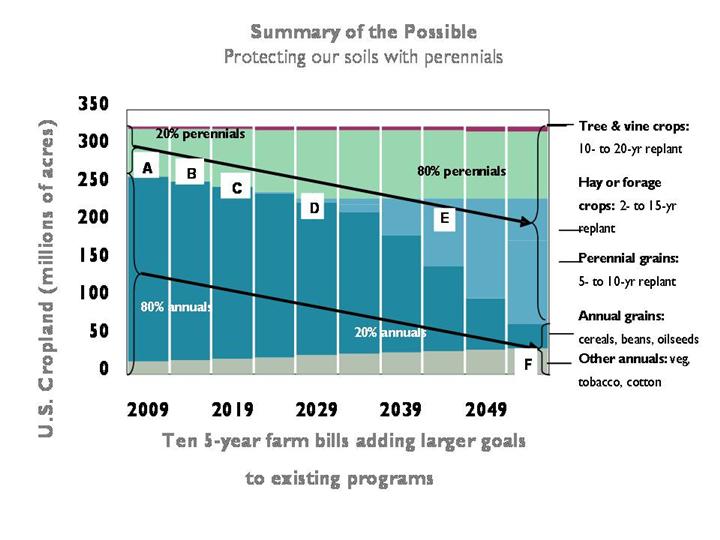| front |1 |2 |3 |4 |5 |6 |7 |8 |9 |10 |11 |12 |13 |14 |15 |16 |17 |18 |19 |20 |review |
 |
Protecting our soil with perennials: national acreage goals Half a century of concerted investment in research, education and incentives to conserve soil with deep-rooted, long-lived perennial crops could increase the protected acreage from 20 to 80 percent.
Pastures and perennial forage crops area already available either in permanent stands or in rotations. We propose incentives which would maintain the present perennial acreage and increase perennials in rotations. When perennial grains become available, they will require no financial subsidy, since they would represent a compelling alternative.
The chart projects what is possible if we assume that the following are achieved in the 5-year periods shown above.
A, 2009 Hay or grazing operations will continue as they exist. Preparations for subsidy changes begin. B, 2014 Subsidies become incentive to substitute perennial grass in rotations for feed grain in meat, egg and milk production. C, 2019 The first perennial grain, Kernza™ (a wheat) will be farmer-ready for limited acreage. D, 2029 Educate farmers and consumers about new perennial grain crops. E, 2044 New perennial grain varieties will be ready for expanded geographical range. Also potential for grazing and hay. F, 2054 High-value annual crops are mainly grown on the least erodible fields as short rotations between perennial crops. |